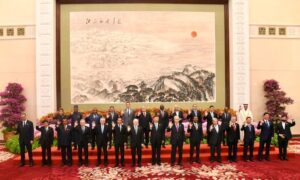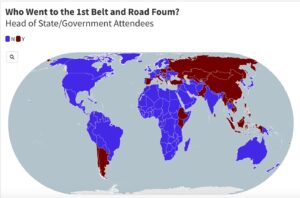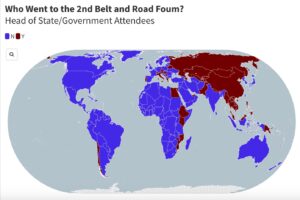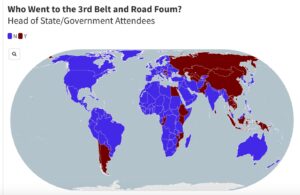On October 18, the third Belt and Road Forum (BRF) unfolded in Beijing, China, marking a pivotal moment in the history of China’s ambitious Belt and Road Initiative (BRI). As top leaders from around the world gathered for the “family photo,” the immediate observation was a significantly smaller turnout than in previous editions.

To put this into perspective, the inaugural Belt and Road Forum in 2017 saw 30 heads of state or government in attendance, including China’s President Xi Jinping. In 2019, the event expanded to host 37 world leaders. However, this year, despite being the first BRF in four years and a notable ten-year anniversary celebration, only 23 heads of state or government made an appearance. It is worth noting that, while there were fewer top leaders, other prominent figures, including Nigeria’s vice president, the New Development Bank president, and the U.N. secretary-general, were present at the forum.

China attempted to downplay the smaller turnout by highlighting the presence of “representatives from more than 130 countries as well as many international organizations.” This emphasis on lower-level representation aimed to underscore the breadth of participation and international support for the BRI.
Several factors likely contributed to the reduced number of high-profile attendees at this year’s BRF. One significant factor is the ongoing crisis in the Middle East, which may have deterred some leaders from the region from participating. For instance, the UAE, which sent its prime minister to the 2019 BRF, opted for a Supreme Council member’s representation at this year’s event. Another factor to consider is the recent Asian Games held in China, which attracted many Asian leaders. With their recent visit to China for the games, some leaders may have found it impractical to make another trip to the country within a month.
While acknowledging these factors, it’s essential to discern some noteworthy trends. The most conspicuous is the absence of European leaders. In 2017, ten heads of state or government from European countries attended the BRF, constituting one-third of the participants. The 2019 forum saw 11 European top leaders. However, this year, only three European leaders were present: Hungarian Prime Minister Viktor Orban, Russian President Vladimir Putin, and Serbian President Aleksandar Vucic. Several European countries that attended the 2017 and 2019 summits chose to skip this year’s edition, indicating a shift in China’s standing in Europe, particularly due to Beijing’s reported support for Russia’s actions in Ukraine.

The decline in the overall number of leaders attending the forum can be primarily attributed to the lack of additional leaders from the Global South. While China has indeed focused on strengthening ties with Global South nations, the BRF failed to attract an augmented representation from these regions, ultimately leading to a lower headcount. One intriguing development is the minimal participation from Southeast Asian leaders. All 11 regional states have signed Belt and Road cooperation documents, but only half of them sent their heads of state or government to this year’s BRF. This is a noticeable contrast to the earlier forums, where seven to nine Southeast Asian leaders attended.
Additionally, the limited attendance of African leaders raises questions. Despite 57 African states signing onto the BRI, only five leaders from the continent participated in the 2023 BRF. The reasons behind their absence, which included sending prime ministers rather than presidents in some cases, remain complex.

A similar disconnect between the number of BRI signatories and the number of leaders attending the forum is apparent in the Middle East and Central America-Caribbean regions. The UAE was the sole representative from the Middle East to attend a BRF in 2019 but decided to downgrade its representation this year. Meanwhile, no leader from Central America or the Caribbean has ever attended a BRF, despite 13 countries from the region participating in the initiative.
The contrasting numbers between BRI signatories and attendees at the Belt and Road Forums suggest that signing up for the initiative may not necessarily reflect a government’s foreign policy priorities. Alternatively, the limited presence of leaders at the BRF could indicate that the event does not hold the same level of significance for most BRI participants, especially during ongoing global crises and pressing economic challenges.
As the third Belt and Road Forum concluded with reduced international participation, it prompts a reassessment of the initiative’s global relevance and the evolving landscape of China’s diplomatic relationships with nations around the world.
















